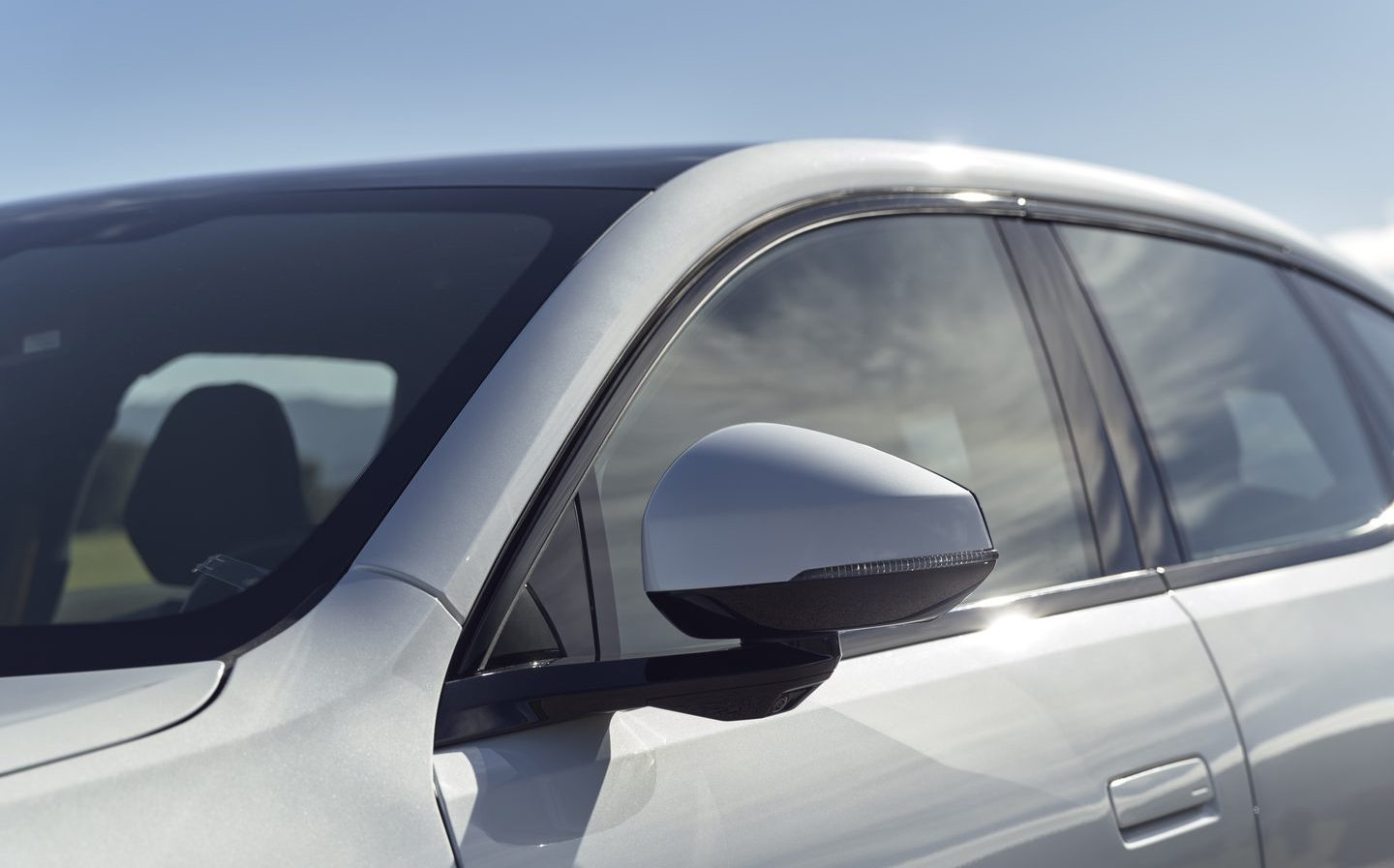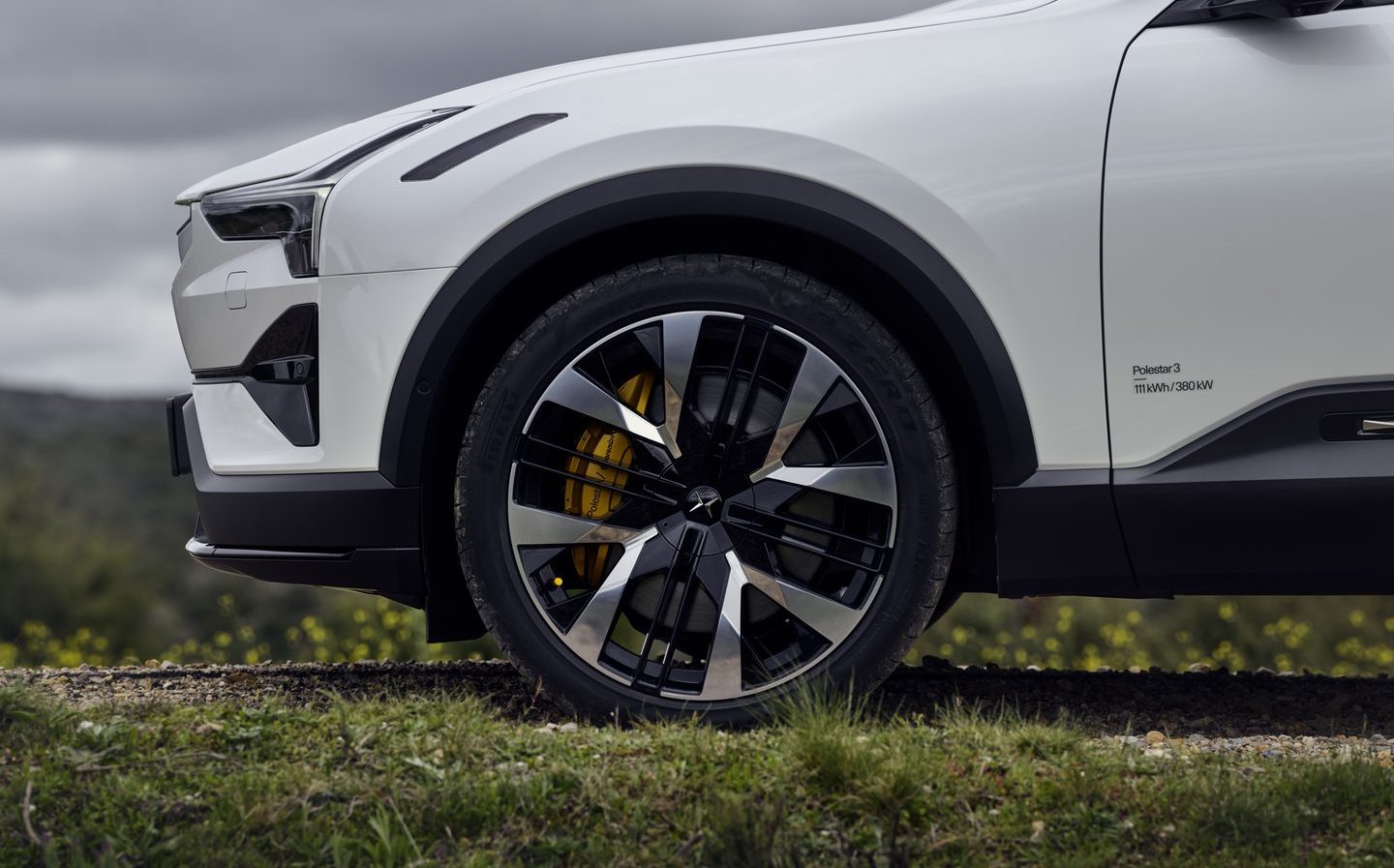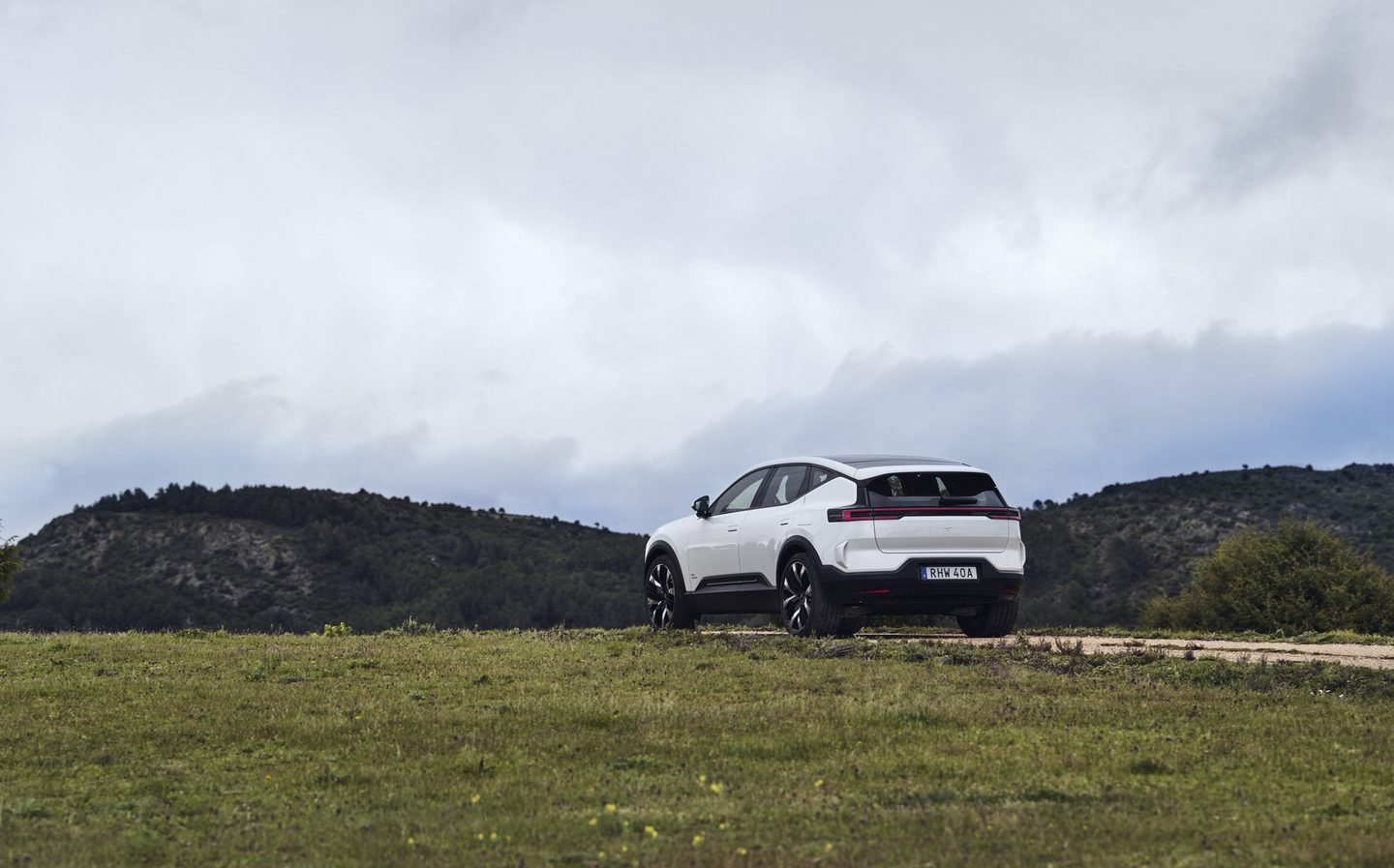Polestar 3 2024 review: Big sporty, electric SUV targets Audi, BMW and Mercedes — with a hint of Saab
You'll never guess the name of the next Polestar...
Polestar is the new Saab. There, I’ve said it. It’s Scandinavian (by way of China, where its ownership resides, and South Carolina, where this Polestar 3 will be made), it’s quirky, it’s different, its drivers love a turtleneck jumper (probably)… and its latest model is standing at the bottom of a long, steep, metaphorical slope.
At the top of that slope is a glittering prize — primacy among premium brands — but to get there Polestar has to slip, slither and clamber over and around the likes of BMW, Mercedes and Audi, all of which have more experience and more customer recognition.
Saab once tried to do the same, and despite its stylish offerings the Swedish brand ultimately floundered, cut off at the knees by penny-pinching General Motors accountancy and a total lack of understanding among the executives in Detroit of quite what a motoring gem they owned.

Polestar? Well, calling it the new Saab is a bit cheeky, what with it being spun-off from Saab’s old Nordic rival, Volvo. Polestar isn’t a subsidiary of Volvo; rather it’s a sibling company, also owned by the giant Chinese car maker Geely (along with the likes of Lotus, Proton and the LEVC company that makes the current London black cab) and which uses many of the same mechanical and electric bits and pieces as Volvo does.
Hence why this new Polestar 3 — finally, another model to sit in Polestar’s minimalist showrooms alongside the neat Polestar 2 fastback — shares so much of its structure and technology with the forthcoming Volvo EX90.

However, while the EX90 is bulky, taller than a prop forward and seats seven (it’s effectively an electric XC90), the Polestar 3 is low, sleek and very definitely seats only five. That decision, which may limit its popularity amongst SUV buyers with bigger families, was taken to avoid treading too heavily on Volvo’s toes, but also for another, much better reason.
Take a look at the Polestar 3’s roof. It’s low, certainly by SUV standards, and is in fact a full foot-and-a-bit closer to the ground than that of the cathedral-like Volvo EX90. Polestar has been particularly bloody-minded about making it so, both to give the Polestar 3 some point of differentiation in the marketplace (BMW iX: ugly; Mercedes EQE SUV: blobby; Audi Q8 e-tron: dull; Polestar 3: low), but also to give it better aerodynamics, so as to make it go further on a full charge of its battery.

It seems to have worked. Even this most-powerful 510bhp Dual Motor Long Range with Performance Pack model (yes, that’s the official name…) can officially manage 348 miles on one charge (officially — expect it to be less in cold weather and when sitting at 70mph on the motorway). The standard Dual Motor Long Range version can go for 390 miles, according to the same test, while the upcoming single-motor variant is expected to be able to bust through the claimed 400-mile barrier.
To get that roof so low, though, Polestar has compromised. Keen to give rear seat passengers decent legroom and headroom (which it has, in abundance) Polestar has moved the rear seat back and downwards. Doing so has reduced the boot volume to a mere 484 litres (a Nissan Qashqai carries more) which is both limiting for the people on board, and also entirely scuppers any chance of there ever being a family-friendly seven-seat model. Banjaxing potential market success to score engineering points: What could be more Saab-like than that?

I’ve only got the two kids, so they’ll be able to get comfortable in the back, and I’d much rather have a car that’s low to the ground rather than perched in the air. Of course, there’s only one of me, and Polestar could do with selling rather more of these Polestar 3s than I can afford (I can afford precisely zero). Not least because the company’s finances have been under intense scrutiny lately, and the sales of its thus-far lonely Polestar 2 have been variable at best. Polestar needs the 3 to be a hit.
It ought to be, given the styling. It’s a terrific looking car, blending function with form to good effect. Up front there’s a spoiler blended in with the nose which helps to duct air up and over the roof, giving it a unique appearance. Certainly, it’s the best-looking car in the big, posh, electric SUV class, and it helps Polestar’s case that BMW scored such a spectacular own-goal with the look of the iX, and Mercedes apparently forgot to give the EQE SUV any styling at all.
The cabin’s good, too, but a touch more mixed than the exterior. The pared-back Scandi look serves the Polestar 3 well, and it gets lots right: the seats; the space; the brightness thanks to the big glass roof; the on-trend recycled materials (and if you want leather it comes from Scottish cows monitored for their health and wellbeing).
But it gets a few things wrong, too: the lack of physical buttons infuriates, especially when the big touchscreen is a bit slow; there are a few too many obvious Volvo bits and pieces (column stalks, steering wheel, the big screen); some trim elements, notably the sliver of wood trim that spans the dashboard, feels cheap for a car costing £81,500 in this Performance pack form.
Equally, can it live up to its billing? Polestar reckons that this is, at heart, a sports car wearing an SUV suit, and has gone to some lengths to make that a reality — not least a complicated multi-clutch pack for the back axle that distributes the power from the rear electric motor to the wheel that can best cope with it. Polestar even reckons that this system can help with the steering, speeding up an outside rear wheel to point the nose more athletically into a corner.

Does that work? Up to a point. Turn the steering, motor response and air suspension up to maximum sportiness and the Polestar 3 feels wieldy and nimble for such a big, heavy (2,670kg) car. With that level of bulk you couldn’t describe it as balletic but in my view it’s possibly a solid Strictly entry.
It won’t get tens from all the judges, mind you. Press on along a winding road, and that low nose starts to feel slower in its responses, needing a beat or a breath before it truly tucks into a corner. Equally, the suspension — even on standard air springs — gets too rowdy on anything less than a perfectly smooth surface. It is fun, but there are limitations. Craig would give it a seven.
The available range also reduces (quite a lot) in proportion to how enthusiastically you’re driving it.
Polestar claims that the clever clutches can help when off-roading, but if you spot anyone driving a Polestar 3 off-road, they’re either lost or they’re a motoring journalist trying to prove it can’t be done.

However, the Polestar 3 does have one particular ace up its sleeve — its price. Even in this priciest Performance pack form (which includes high-spec Brembo brakes and Swedish gold highlights in the colour scheme) it’s a full £15,000 cheaper than the cheapest Volvo EX90, which uses all of the same basic mechanical bits.
So, you’re getting a sportier, better-looking, reasonably engaging-to-drive electric SUV for less, and all you’ve had to sacrifice are some extra seats and a more voluminous boot. That’ll be fine for many.
It’s even more affordable than the equivalent BMW iX eDrive50, significantly less expensive than the new Audi SQ6 e-tron, and a similar amount cheaper than the Mercedes EQE SUV. A bargain, then, and you could save even more by going for the regular Dual Motor Long Range car, which only loses 27bhp compared to the Performance pack model and which is most certainly the one to go for.
Will anyone care, is the question. Polestar is a relatively new brand and there are plenty of people out there who still haven’t heard of it nor know what it’s about. That makes the treacherous climb to the top of the premium electric SUV mountain that much harder. Saab never quite managed it. Can Polestar?
Chinese car makers
Polestar is a Swedish brand with headquarters in Gothenburg. It is owned by Geely, a Chinese car giant. Buyers ought to be aware that Chinese car makers, however independent they claim to be, have been criticised for receiving an unfair advantage through WTO rule-breaking state support, from a regime that Amnesty International reports carries out torture, genocide and routine suppression of dissent.
Related articles
- If you found our review of the Polestar 3 interesting, take a look at the 872bhp Polestar 5 prototype
- Have you read our review of the 2024 Polestar 2?
- The Polestar 4 SUV coupé will be the company’s fastest production car yet
Latest articles
- Aston Martin Valkyrie AMR-LMH hypercar hits track ahead of 2025 Le Mans challenge
- Porsche has begun testing the electric Cayenne
- Cupra Leon 272 eHybrid 2024 review: Bigger battery, better tech … but is it a Cupra?
- Porsche 911 GTS 2024 review: Hybrid heresy or more Stuttgart genius?
- Extended test: 2023 Vauxhall Astra Sports Tourer GS PHEV
- Ford Capri revival has faced a lot of flak… but are buyers put off? Here’s what visitors to the Festival of Speed had to say
- F1 2024 calendar and race reports: What time the next grand prix starts and what happened in the previous rounds
- ‘No timeframe’ for how long Volvo’s returning estate cars will be on sale in UK
- Kia Picanto 2024 review: Updates add spice to cute Korean city car
































